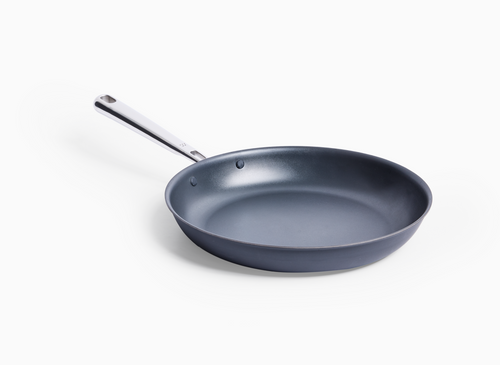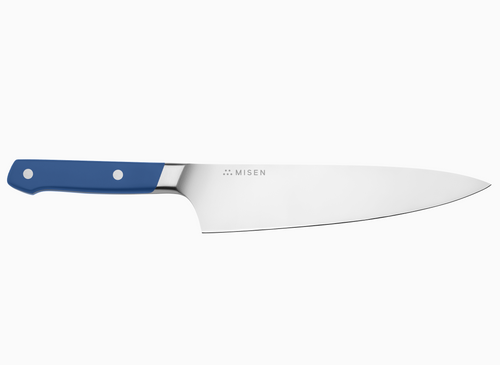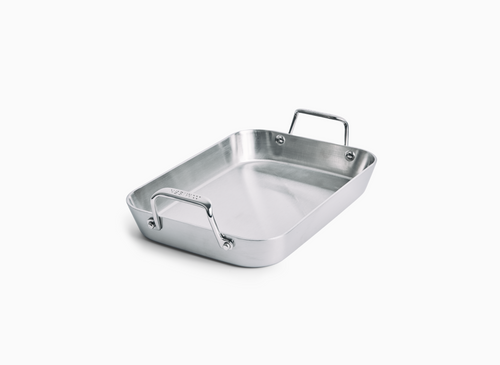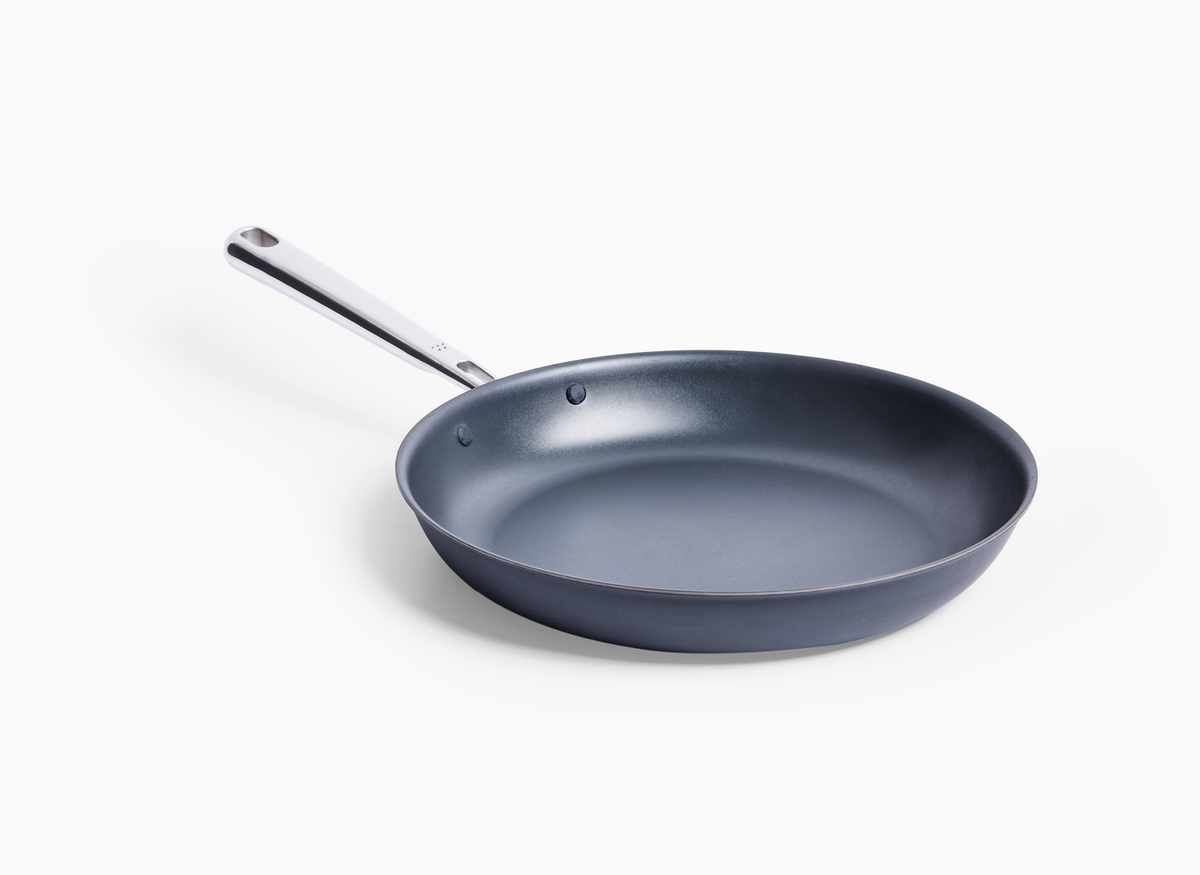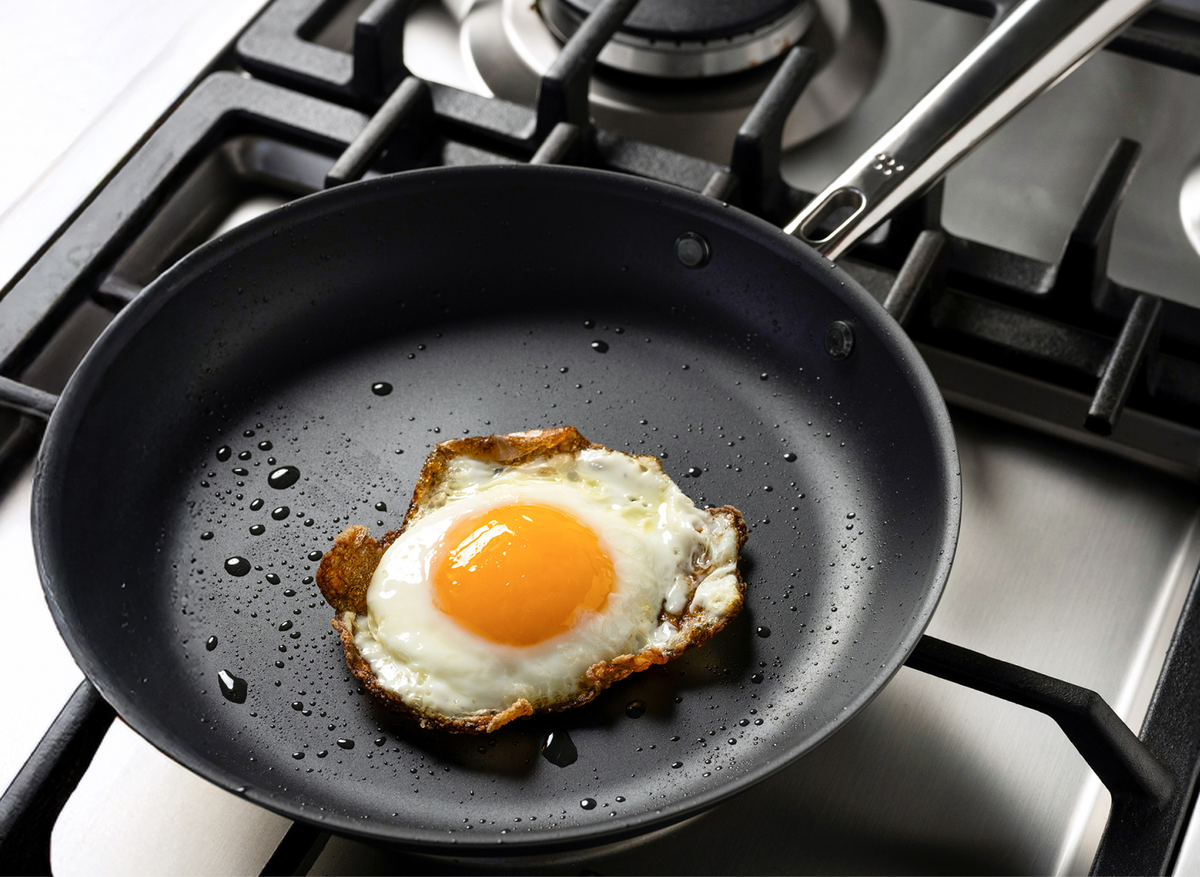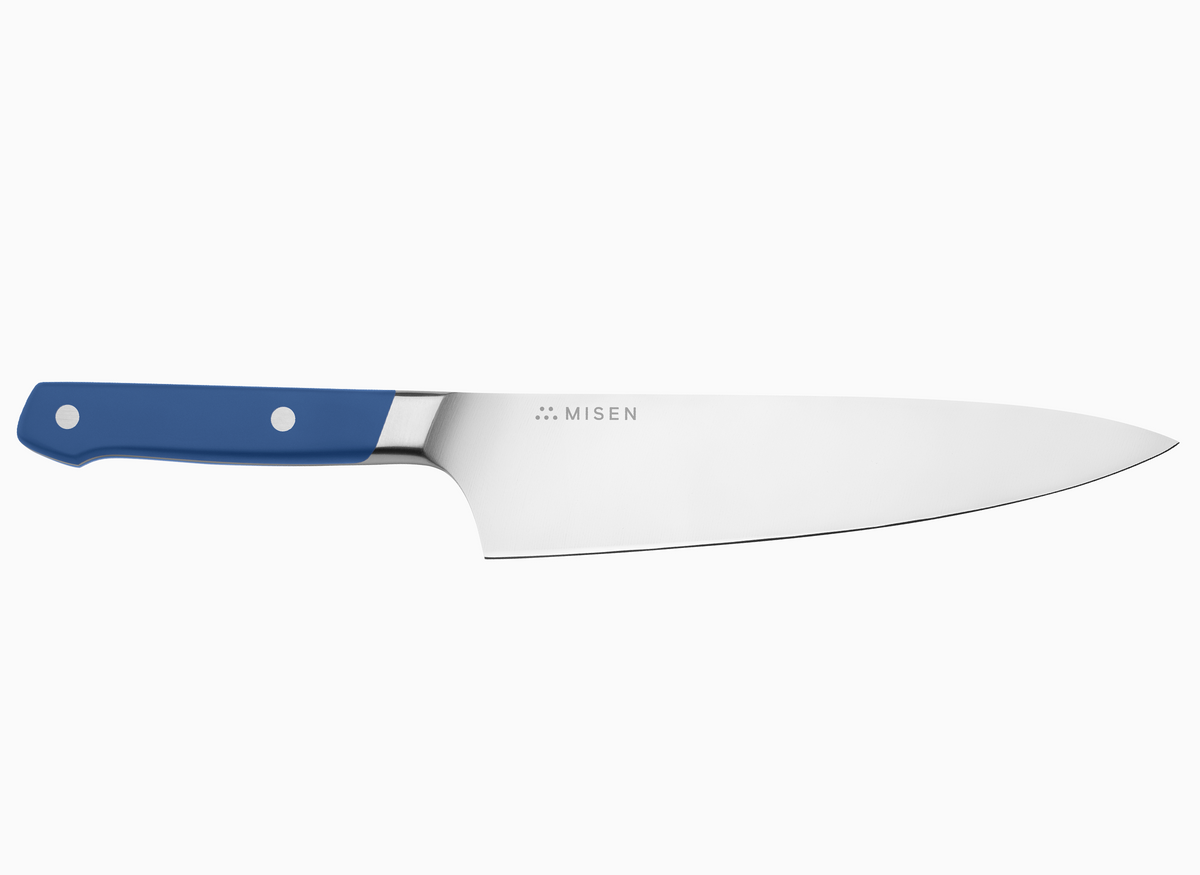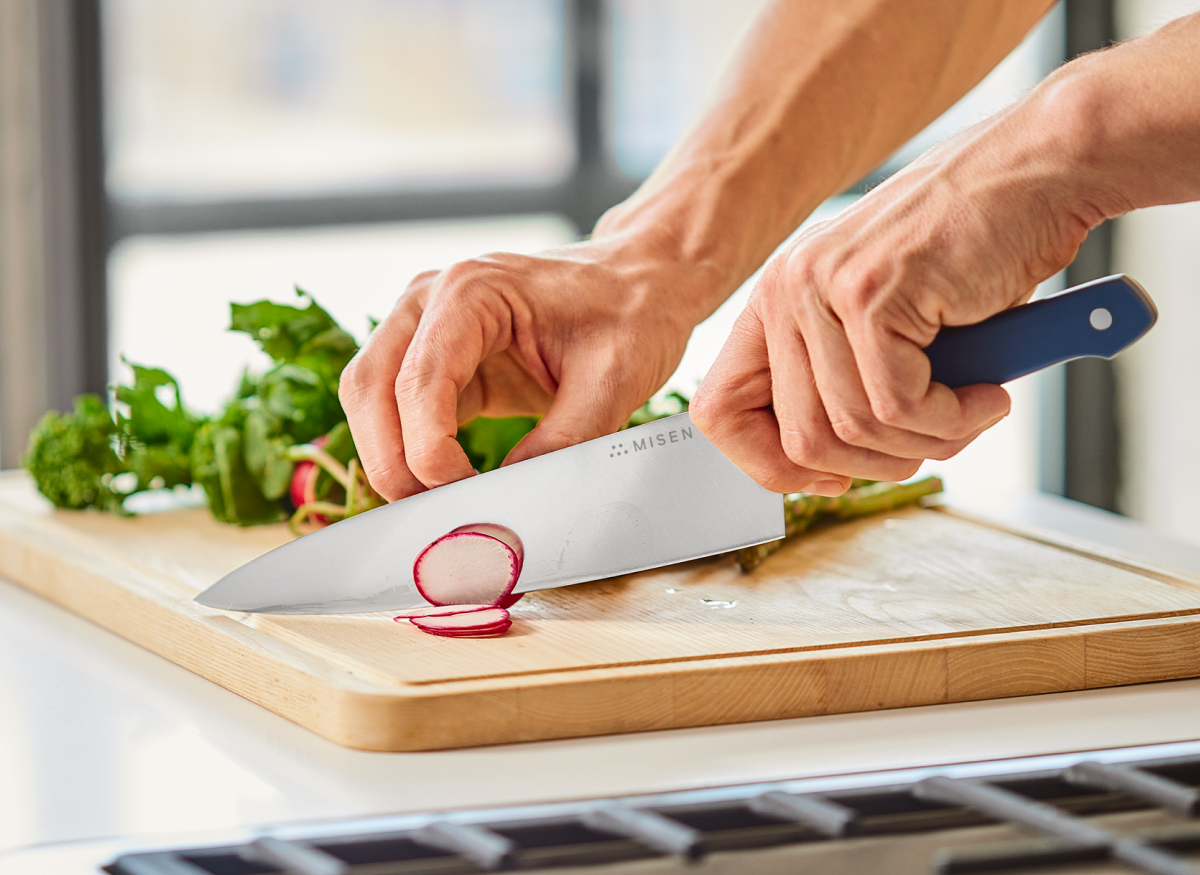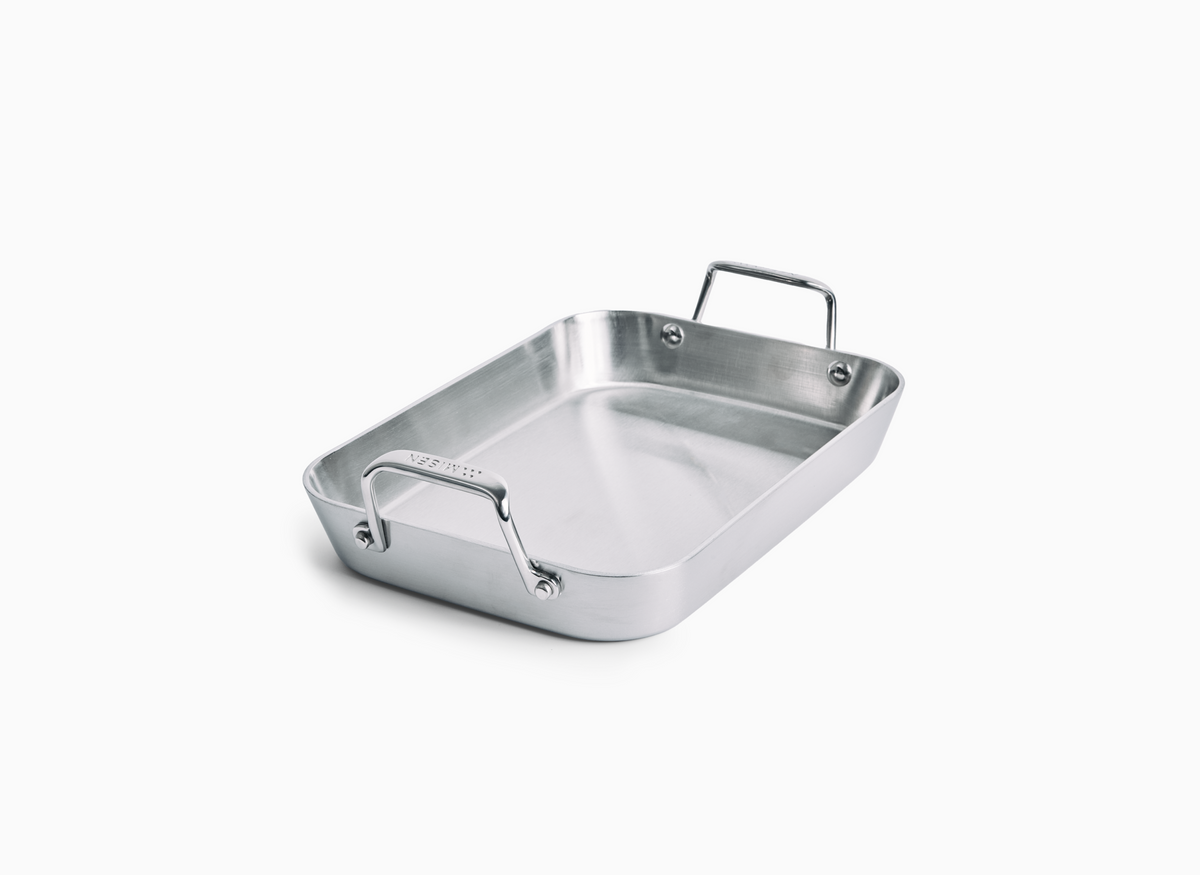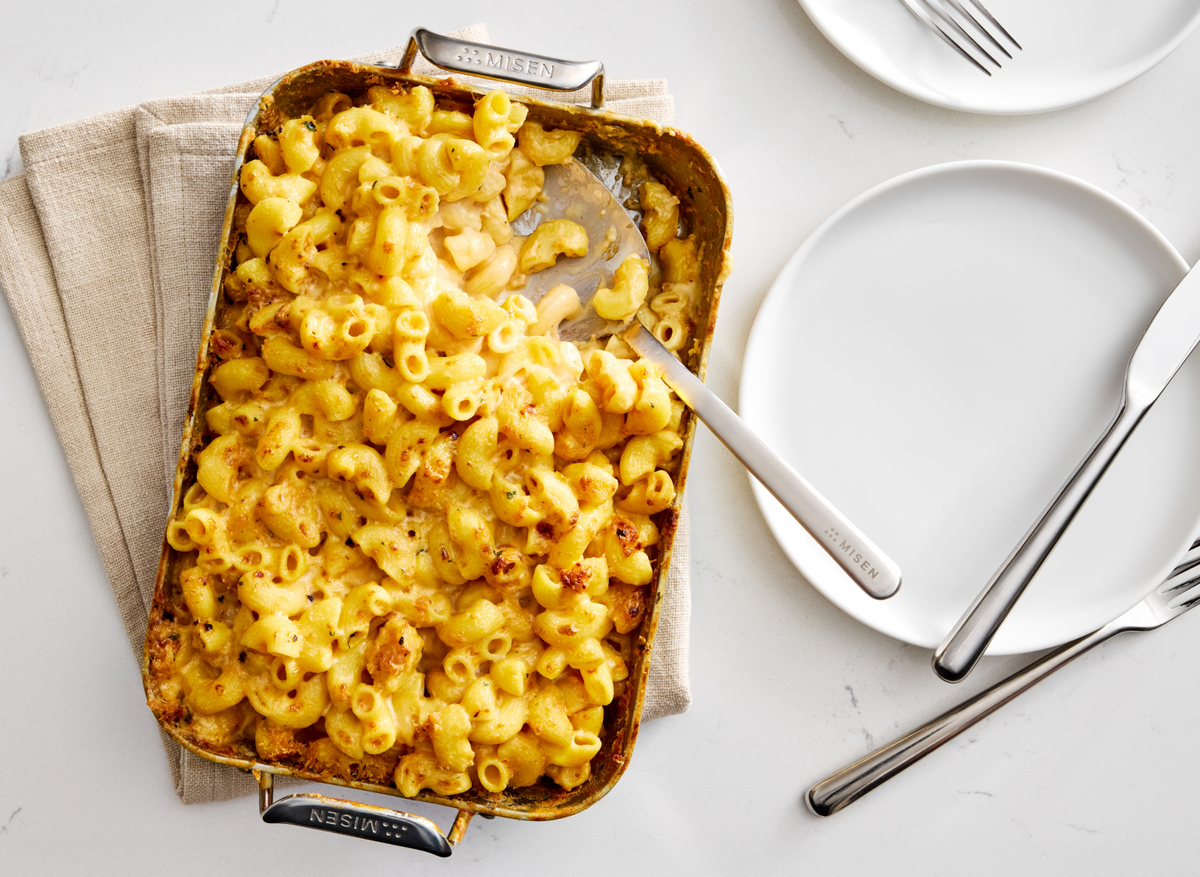Carbon Steel Pan Guide: How Nonstick Is a Carbon Steel Pan?

Understanding Carbon Steel as a Cooking Surface
Durability and evolving non-stick properties set carbon steel pans apart.
What Makes Carbon Steel Different from Other Cookware Materials
Carbon steel combines 99% iron and 1% carbon to create cookware that blends durability with responsiveness. Its lower carbon content compared to cast iron allows for thinner, lighter pans that remain sturdy and heat‐responsive. A 12-inch carbon steel pan typically weighs 5.6 pounds, making it easier to maneuver for techniques like sautéing and stir‐frying[1]. The manufacturing process for carbon steel pans results in a smoother cooking surface, similar to vintage cast iron, which contributes to its superior non‐stick capabilities when properly seasoned[2].
The Natural Non-Stick Potential of Carbon Steel Pans
Carbon steel pans develop a natural non‐stick surface through seasoning – a process where oil fills the pan's microscopic pores to create a protective cooking layer[4]. This polymerized oil coating builds up over time, creating a dark patina that enhances the pan's performance[5]. While a well‐seasoned carbon steel pan won't achieve the same level of non‐stick properties as synthetic coatings, it offers superior durability and can handle extremely high temperatures without degrading[6].
Carbon Steel vs. Traditional Non-Stick: Key Differences
The fundamental difference between carbon steel and traditional non‐stick pans lies in their construction and performance characteristics. Carbon steel develops its non‐stick properties naturally through seasoning, while non‐stick pans feature a synthetic coating applied to a metal base[7]. Carbon steel pans can handle temperatures up to 1200°F, making them ideal for high‐heat cooking tasks like searing steaks. They also offer superior temperature control and heat retention, though they require more maintenance and cannot handle acidic ingredients well without compromising the seasoning[8].
Benefits Beyond Non-Stick: Durability, Heat Retention, and Versatility
Carbon steel pans offer several key advantages beyond their non‐stick capabilities. Their unique composition creates cookware that excels at heat retention while remaining significantly lighter than alternatives[10]. The material's exceptional heat conductivity allows for precise temperature control, making it ideal for high‐heat cooking methods like searing and stir‐frying[11]. Carbon steel pans can safely handle temperatures up to 1200°F, far exceeding the limits of traditional non‐stick cookware. Their durability is unmatched – while other pans may need replacement after a few years, carbon steel can last a lifetime with proper care[11].
The Science of Non-Stick in Carbon Steel Pans
Scientific seasoning transforms raw metal into a naturally non-stick surface.
How Seasoning Creates a Non-Stick Surface
Seasoning transforms a carbon steel pan's bare metal surface into a naturally non-stick cooking tool through a process of polymerization. When oil is heated on the pan's surface, it changes from a liquid state into a solid, plastic-like polymer that bonds with the metal[13]. This polymerized oil coating serves two critical functions: it prevents the pan from rusting when exposed to moisture and creates a non-stick surface that rivals modern cookware, making it excellent for cooking eggs, pancakes, and delicate foods[13].
The Polymerization Process Explained
Polymerization transforms liquid oil into a solid, plastic-like polymer that chemically bonds with the carbon steel surface[13]. This process occurs when oil is heated to high temperatures, causing it to break down and reform into a new molecular structure that creates the non-stick coating[13]. The key to successful polymerization lies in applying extremely thin layers of oil – any excess will result in a sticky, splotchy coating that's difficult to fix[5].
Building Patina: How Your Carbon Steel Pan Improves Over Time
A carbon steel pan's patina develops gradually through regular use and proper care. The seasoning layer builds naturally as you cook, with oils and fats filling the pan's microscopic pores to create an increasingly slick surface[15]. Carbon steel's relatively shallow pores allow it to develop this smooth cooking surface more quickly than cast iron[15]. The patina serves dual purposes: preventing rust while enhancing non-stick properties that rival modern cookware, making it particularly effective for cooking eggs, pancakes, and other delicate foods[15].
The Relationship Between Proper Seasoning and Non-Stick Performance
A properly seasoned carbon steel pan's non-stick performance depends heavily on the polymerization process and ongoing maintenance. The seasoning creates a protective coating that not only prevents rust but also develops natural non-stick properties through polymerized fats bonding with the metal surface[10]. While initial seasoning requires just one oil application to make the pan cooking-ready, the surface appearance and non-stick qualities evolve gradually over time through regular use[10].
Achieving Maximum Non-Stick Performance
Optimal oil selection and careful layering unleash maximum non-stick efficiency.
Initial Factory Seasoning vs. Home Seasoning Techniques
Most carbon steel pans arrive completely unseasoned, allowing users to witness the transformation from bare metal to a functional cooking surface[13]. The initial seasoning process creates a functional cooking surface through just one proper oil application, though the pan's appearance may remain brown and blotchy for months before developing its characteristic black finish[10]. While some manufacturers now offer pre-seasoned carbon steel pans, starting with bare metal allows cooks to build their own seasoning foundation and better understand how the polymerization process works[17].
Best Oils for Seasoning Your Carbon Steel Pan
Choosing the right oil for seasoning is crucial for developing a durable non-stick surface on carbon steel. Neutral oils with high smoke points like canola, vegetable, and grapeseed oil work best for seasoning[13]. Avoid using lard, shortening, butter, olive oil, or flaxseed oil – butter contains water and milk solids that interfere with polymerization, olive oil often has sediment that can create an uneven coating, and flaxseed oil produces beautiful but unstable seasoning that tends to flake off[13].
Step-by-Step Seasoning Methods for Optimal Results
Proper seasoning starts with removing the protective coating from new carbon steel pans by scrubbing with hot water and a non-metallic brush until the surface feels smooth[13]. After thoroughly drying the pan, apply about 4-5 drops of neutral, high smoke point oil like canola, vegetable, or grapeseed[18]. Using a paper towel, buff the oil until the pan appears completely dry with no visible sheen[18]. Heat the pan on medium-high until it starts smoking, then reduce to medium heat[18]. Continuously wipe away any oil that pools on the surface while moving the pan to ensure even browning[18].
How to Maintain and Build Upon Your Seasoning Layer
Maintaining a carbon steel pan's seasoning requires consistent care after each use. Clean the pan by hand with warm water and minimal soap if needed, using a scrub brush or non-scratch pad for stuck food[13]. After cleaning, immediately dry the pan thoroughly with a lint-free cloth to prevent rust formation[13]. Apply an extremely thin layer of neutral oil like canola, vegetable, or grapeseed – if you wonder whether you've used too much oil, you definitely have[13]. Heat the pan briefly on low to help the oil bond with the surface.
Real-World Non-Stick Performance
Real-world cooking reveals the reliable yet nuanced non-stick performance of seasoned pans.
What to Realistically Expect from a Well-Seasoned Carbon Steel Pan
A well-seasoned carbon steel pan delivers reliable non-stick performance, though expectations should be calibrated appropriately. While the surface won't match synthetic coatings' complete food release, properly seasoned carbon steel allows eggs to slide freely with minimal oil[19]. The pan's non-stick qualities develop quickly through initial seasoning and stabilize within 5-6 uses, rather than continuously improving over years[20]. What actually improves over time is the cook's technique and understanding of the pan's heat management requirements[20].
Foods That Excel in Carbon Steel vs. Foods That May Challenge It
Carbon steel pans excel at cooking proteins and high-heat dishes while presenting some challenges with specific ingredients. They are ideal for searing steaks to achieve a perfect brown crust while maintaining juicy interiors, thanks to their excellent heat retention and distribution[10]. They perform exceptionally well with skin-on chicken, creating golden-brown, crispy skin while keeping meat tender through even heating[10]. However, acidic ingredients like citrus, wine, tomatoes, and vinegar can strip away the protective patina, requiring occasional re-seasoning[17].
Preheating and Temperature Management for Non-Stick Cooking
Proper temperature management starts with gradual preheating to prevent warping and ensure even heat distribution. Heat the pan slowly over medium heat for a few minutes until you can feel warmth radiating when holding your hand a few inches above the surface[18]. Once preheated, add your cooking fat and let it warm for several minutes before adding food[22]. Carbon steel responds quickly to temperature changes, allowing precise control when switching between high-heat searing and gentle simmering[22].
Comparing Carbon Steel's Non-Stick Properties to PTFE and Ceramic Coatings
While a properly seasoned carbon steel pan provides reliable non-stick performance, it never matches the complete food release of synthetic non-stick coatings[23]. However, carbon steel offers superior longevity – its natural coating can be stripped and reapplied indefinitely at home, while synthetic coatings wear out within a few years even with careful use[24]. Temperature tolerance creates another key distinction – carbon steel handles extreme heat without degrading, while synthetic coatings begin breaking down at lower temperatures[25].
Troubleshooting Non-Stick Issues
Identifying and rectifying sticking problems restores your pan's smooth performance.
Common Reasons Why Food Sticks to Your Carbon Steel Pan
Food sticking to carbon steel pans typically stems from a few key issues with seasoning and technique. A new pan requires time to develop proper seasoning – sticking is normal until the protective patina forms through repeated use and proper care[26]. Inadequate preheating is another common culprit – the pan needs gradual warming on low heat for several minutes before adding oil, which should shimmer before food is introduced[26]. Cooking acidic ingredients like citrus, wine, or vinegar can strip away the seasoning layer, leading to sticking issues that require re-seasoning[26].
Managing Acidic Ingredients That Can Affect Seasoning
Acidic ingredients require special handling in carbon steel pans since they can compromise the seasoning layer. Tomatoes, citrus fruits, and vinegars break down the protective patina that gives the pan its non-stick properties, potentially leading to rust formation[29]. While cooking acidic foods won't permanently damage your pan, you'll need to reseason it afterward to restore the protective coating[30]. For recipes requiring longer exposure to acidic ingredients, opt for alternative cookware instead[17].
Fixing Uneven Patina and Poor Non-Stick Areas
Uneven patina and poor non-stick areas can be fixed through targeted intervention. When seasoning appears splotchy or uneven, focus on the pan's feel rather than appearance – a properly seasoned surface should feel smooth to touch, while stickiness or roughness indicates too much oil was used[17]. For sticky patches, scrub the pan under hot water to remove excess seasoning, dry thoroughly, heat until almost smoking, then apply minimal oil while wiping away any excess[31].
When and How to Re-Season Your Carbon Steel Pan
Re-seasoning becomes necessary when your carbon steel pan shows signs of degraded performance or damage to the protective coating. Key indicators include food sticking more than usual, patchy or uneven seasoning, or areas where the coating has flaked off[27]. The process involves stripping the pan back to its base layer and rebuilding the seasoning from scratch[27]. For a complete re-seasoning, clean the pan thoroughly with hot water and a stiff brush, dry it completely, then follow the initial seasoning process: apply an extremely thin layer of neutral oil like canola, heat until smoking, and repeat 3-4 times[32].
Daily Cooking and Maintenance for Non-Stick Performance
Consistent care and smart utensil use keep your pan in peak non-stick condition.
Cleaning Your Carbon Steel Pan Without Compromising the Non-Stick Surface
Proper cleaning starts with avoiding dish soap, which can strip seasoning and leave problematic residue[30]. Instead, use warm water and a non-metallic brush or scrubber for routine cleaning[18]. For stuck-on food, try three escalating methods: First, simply wipe out excess oil with a paper towel if the pan was properly seasoned. Second, create a paste with coarse salt and oil to gently scrub away residue. Third, bring water to a boil in the pan to loosen stubborn bits[17].
Proper Storage to Protect Your Seasoning
Proper storage starts with ensuring your carbon steel pan is completely dry to prevent rust formation in humid environments[30]. After cleaning and drying, heat the pan briefly on low heat to evaporate any remaining moisture, then apply an extremely thin layer of neutral oil like canola or vegetable oil before storing[18]. Store the pan in a dry place away from moisture sources, regularly inspecting the surface for any early signs of rust that would require intervention[30].
Using the Right Utensils with Your Carbon Steel Pan
Carbon steel pans require careful utensil selection to maintain their seasoning and non-stick properties. Metal utensils should be avoided as they can chip away at the polymerized oil coating, leading to sticking points that compromise performance[33]. For optimal results, use wooden, silicone, or other non-metallic tools when cooking. Even with proper utensil choice, the seasoning layer requires ongoing maintenance – periodic re-seasoning may be needed depending on cooking frequency and utensil use patterns[17].
How Regular Use Enhances Non-Stick Properties
Regular use enhances a carbon steel pan's non-stick properties through consistent cooking and proper maintenance. While initial seasoning creates a functional cooking surface, the pan's non-stick qualities stabilize within 5-6 uses rather than continuously improving over years[6]. What actually improves is the cook's technique and understanding of heat management – professional chefs demonstrate this mastery by cooking eggs with minimal oil spray[6]. Each cooking session, particularly with fatty foods, contributes to building the patina as oils fill the pan's microscopic pores[19].
- Carbon steel pans develop a natural non-stick surface through seasoning, offering durability and high-heat performance.
- The polymerization process creates a protective, non-stick coating that improves with regular use and proper maintenance.
- Choosing the right oil and applying it in extremely thin layers is crucial for successful seasoning.
- While not as non-stick as synthetic coatings, carbon steel excels in versatility, longevity, and heat tolerance.
- Proper cleaning, storage, and utensil use are essential for maintaining the pan's non-stick properties over time.
- [1] https://misen.com/blogs/news/carbon-steel-vs-cast-iron-a-comprehensive-comparison
- [2] https://www.seriouseats.com/what-makes-carbon-steel-pans-great-cast-iron-cookware
- [4] https://gastrotools.com/blogs/guides/carbon-steel-guide-how-to-build-natural-nonstick-seasoning
- [5] https://madeincookware.com/blogs/seasoning-101-the-guide-to-seasoning-carbon-steel-cookware
- [6] https://www.seriouseats.com/best-carbon-steel-pans-7093873
- [7] https://madeincookware.com/blogs/carbon-steel-vs-non-stick
- [8] https://misen.com/blogs/news/carbon-nonstick-vs-carbon-steel
- [10] https://misen.com/blogs/news/carbon-steel-pan-ultimate-guide-to-cooking-mastery-today
- [11] https://debuyer-usa.com/blogs/guides/carbon-steel-vs-stainless-steel-pans-which-is-best?srsltid=AfmBOoo2Lk-Ds5hApE6eEFaUbliUTmIYCwX7w6THC36UegHoGG6e68sd
- [13] https://www.seriouseats.com/how-to-season-carbon-steel-pans
- [15] https://debuyer-usa.com/blogs/how-to/season-carbon-steel-pan?srsltid=AfmBOorZBAeE5c5KOadiuz2AmjqN-enPN66VAQzeuUy2RobgLIrsFsZx
- [17] https://madeincookware.com/blogs/carbon-steel-care-guide
- [18] https://misen.com/pages/carbon-care
- [19] https://howtomakedinner.com/blog/cooking-with-carbon-steel-pans/
- [20] https://www.reddit.com/r/carbonsteel/comments/vg174r/do_carbon_steel_pans_really_get_better_with/
- [22] https://madeincookware.com/blogs/how-to-cook-with-carbon-steel-pans
- [23] https://www.seriouseats.com/nonstick-vs-ceramic-skillets-7110252
- [24] https://www.reddit.com/r/Cooking/comments/gq7buv/carbon_steel_vs_teflon_could_use_some_guidance/
- [25] https://prudentreviews.com/carbon-steel-vs-non-stick-cookware/
- [26] https://made-in.gorgias.help/en-US/everything-i-cook-sticks-to-my-carbon-steel-pan-255216
- [29] https://www.realsimple.com/what-not-to-cook-in-carbon-steel-8695870
- [30] https://www.marquettecastings.com/blogs/blog-2/how-to-care-for-carbon-steel-pan
- [31] https://misen.com/pages/preseasoned-carbon-care
- [27] https://madeincookware.com/blogs/how-to-reseason-a-carbon-steel-pan
- [32] https://www.reddit.com/r/carbonsteel/comments/nzv92d/the_ultimate_seasoning_guide_with_waaaay_more/
- [33] https://www.foodandwine.com/lifestyle/kitchen/best-carbon-steel-pans
